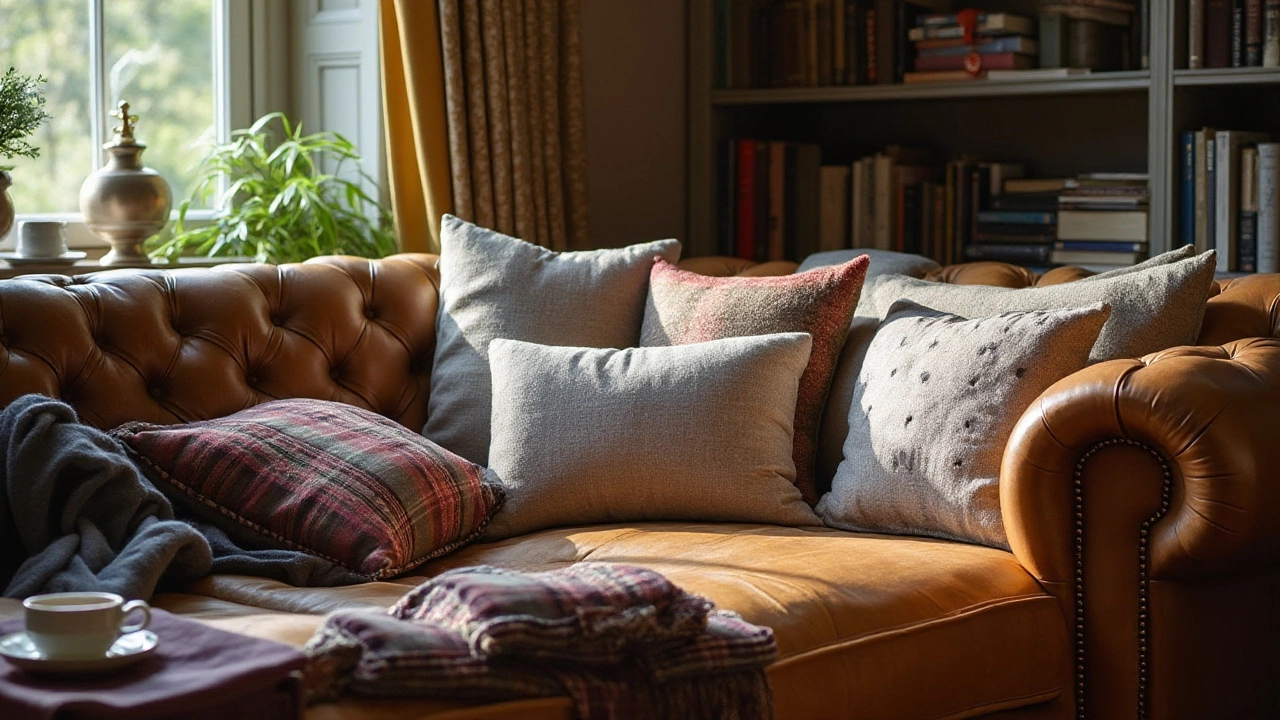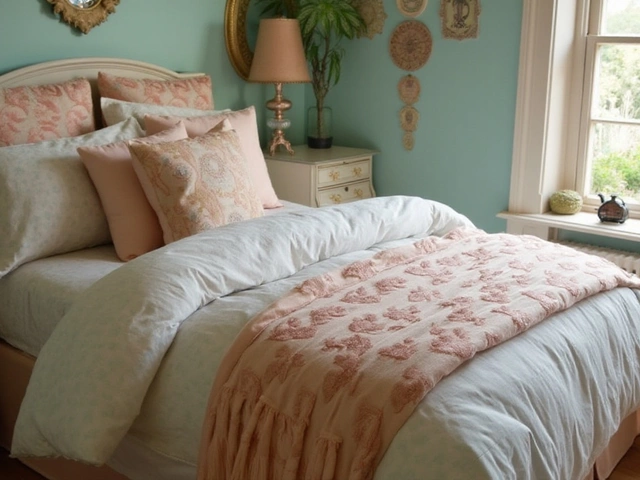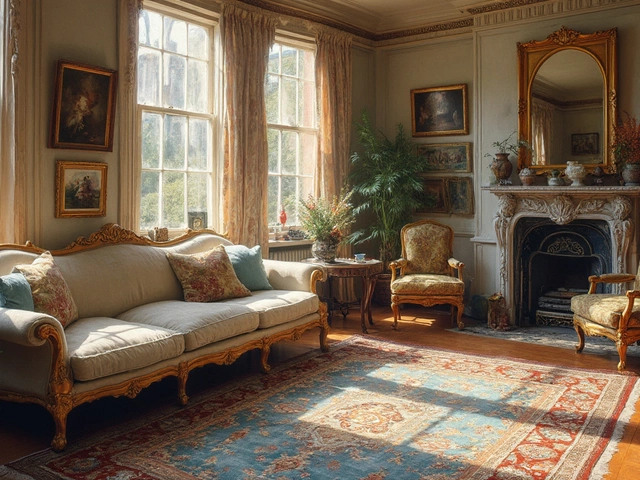In the world of interior design, cushions do far more than merely complement a couch. They offer a simple yet effective way to breathe new life into your living space. But how many cushions should you really have on your couch? The answer varies, hinged on personal taste, functional needs, and the dimensions of your furniture.
While too many cushions can overcrowd and diminish the usability of the couch, too few might make it feel stark and uninviting. Arranging the right number of cushions involves a balance — one that takes into account not just the visual appeal but also comfort and ease of use. Whether you're aiming for a minimalist look or a lavish ensemble, the way cushions are used can significantly impact the ambiance of a room.
- Understanding Couch Dimensions
- The Role of Comfort
- Style vs Functionality
- Mixing Patterns and Textures
- Creative Arrangement Ideas
Understanding Couch Dimensions
When it comes to choosing the right number of couch cushions, the dimensions of your furniture play a crucial role. A small loveseat, for example, might be overwhelmed by too many cushions, making it important to aim for balance. Typically, the smaller the couch, the fewer the cushions—you might see two or three neatly placed cushions on a standard-sized loveseat. For larger sectionals, room exists to explore more options, bringing in diverse sizes and shapes to create visual interest without overwhelming the space.
The depth of the seat also impacts cushion strategy. Deeper seats invite an additional layer of cushions, offering back support while enhancing comfort; a flat arrangement might suffice for shallow seats. The width of the backrest can guide your creative cushion arrangements, allowing room for mixing large square cushions with smaller lumbar pieces. For standard three-seater sofas, arranging between three to five cushions is often ideal, alternating between sizes for a natural look. It's about finding that sweet spot between utility and style.
"Good design is all about making other designers feel like idiots because that idea wasn’t theirs," mused renowned designer Frank Chimero, and this notion applies well to cushions which can transform the mainstream into the bespoke.
Beyond the dimensions of your sofa, the room's architecture—window placement, nearby furniture, and lighting—also dictates how many cushions are suitable. A couch accentuated by cushions can unify a room’s theme while subtly protecting upholstery, extending its life. Consider factors such as the couch's arms and whether they're wide enough to host additional side cushions—they enhance symmetry and provide a cozy nook for leisurely lounging. Bear in mind the existing style of the room as well; modern homes tend to favor minimalist layouts, discouraging an overwhelming number of cushions.
Ultimately, there's no strict rule to guide this choice, but understanding couch dimensions provides a useful framework. Begin with a base number of cushions—two per seat on smaller couches—and gradually adjust until you find the set that captures your style and offers the desired comfort. As you embark on this journey, remember that fluidity is key: let the couch dimensions guide but never dictate your choices.
The Role of Comfort
When it comes to selecting couch cushions, the first thought might lean towards aesthetics, but comfort reigns supreme in the art of selecting the ideal number. Comfort is not simply about how soft a cushion feels against your back; it’s the holistic experience that a living space exudes. The perfect couch cushion setup should invite you to sink into the sanctuary of your home after a long day. It should embrace you in a way that enhances relaxation and conversation, creating an environment that soothes and refreshes the spirit. Cushions play an unseen but potent part, and choosing wisely can transform an ordinary couch into your personal oasis.
The key to comfort isn't about how plush a pillow gets; it’s a delicate balance between softness, structure, and support. Each living room decor setup tells a story and sets a mood for the inhabitants and guests. Imagine a couch peppered with perfectly coordinated cushions that not only fit aesthetically but also cradle you with support, preventing that slouchy posture we often find ourselves in. Functional cushion placement can also offer ergonomic benefits by supporting the right areas, helping to alleviate unnecessary back strain during long lounging sessions. This is vital when you consider many people spend substantial amounts of time in these spaces either alone or hosting family and friends.
A harmonious blend of cushions keeps everyone from competing for the couch’s name - whether it’s for movie nights, casual reading time, or an impromptu nap. While standard options like rectangles and squares keep it conventional, don't shy away from the varied textures and sizes that pop into the market now. Consider what textures entice your senses and how label-aware eco-friendly materials might add to your peace of mind and comfort. Interestingly, a study found that textured surfaces often increase sensory pleasure, making one's relaxation moments a richer experience. And the diversity in size, shape, and feel can add layers of comfort you never knew you needed.
"A living room that takes comfort seriously doesn't undermine style; it elevates it," suggests interior design expert, Linda Flemming. "Find that balance and you'll redefine what a cozy home feels like."
For those who prioritize function, the number of cushions should also accommodate the anticipated activities on the couch. If your family enjoys sprawling out during leisure time, opt for fewer, but larger cushions that maximize space and ease of movement. On the other hand, if the couch frequently doubles as a social gathering point, a few strategically placed cushions can encourage guests to mingle comfortably without awkward shifts in seating. The choice of fabric can amplify comfort, with breathable options like cotton, wool, or linen providing a touch-friendly experience, especially under varied climates. Don’t forget seasonal changes, as they might call for an adaptable set of cushion covers - think lighter colors and fabrics during summer, and plush, warm ones for winter.
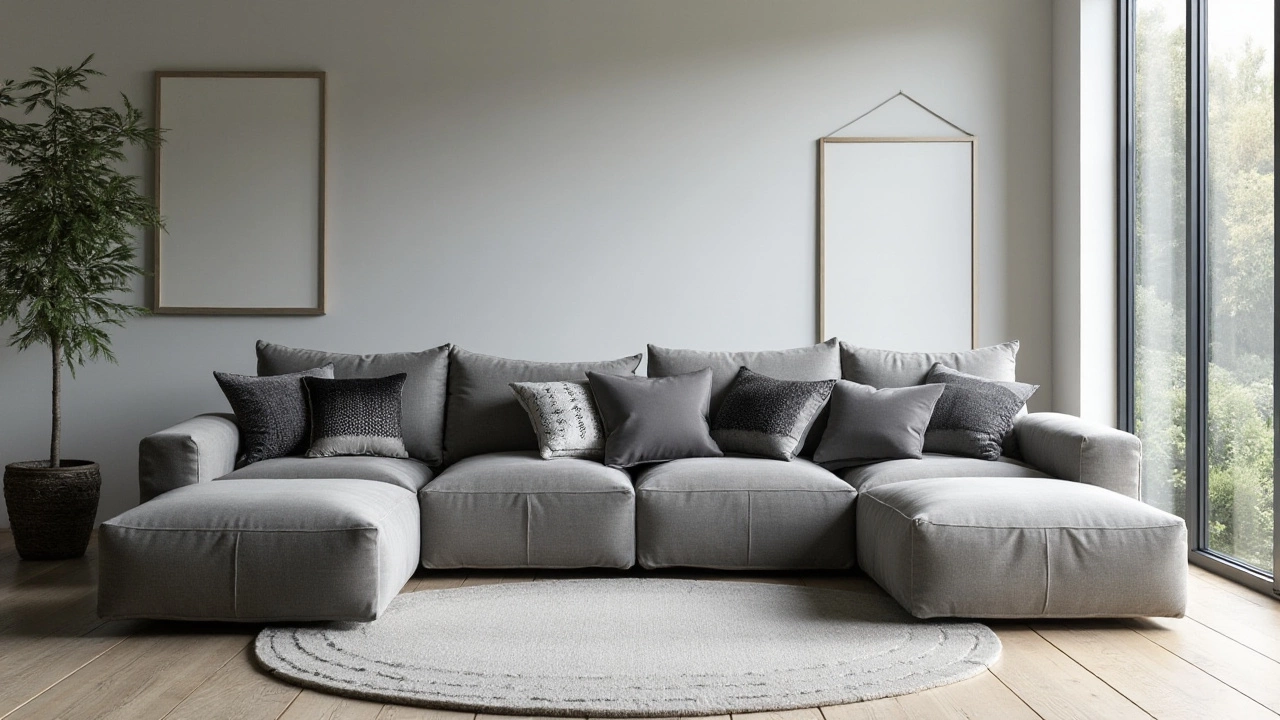
Style vs Functionality
When contemplating the perfect number of couch cushions, one must navigate the delicate tapestry woven between style and functionality. Cushions are much more than colorful accents; they embody a synthesis of form and function, art and pragmatism. A couch adorned with an excessive number of cushions may evoke a plush magazine spread, but at the same time, it might render the seating space impractical for everyday relaxation. The choice of cushions should reflect not only a desire for visual harmony but also the demands of comfort and ease. Home is where we uncoil our tight springs of the day, and cushions play a pivotal role in encouraging us to lean back and unwind.
Let's consider the stylistic implications first. Adding couch cushions to a seating arrangement allows for personal expression, the palette of colors, patterns, and textures inviting a chance to infuse personal flourishes. Yet, style must not overshadow the couch’s utility. Imagine layer upon layer of carefully selected cushions, each complementing a different element in the room, yet leaving you to ponder where one might actually sit. This is the kind of impasse where a cohesive balance must emerge, one where visual allure does not impede the fundamental function of a couch: comfort. As the saying goes, "Have nothing in your house that you do not know to be useful, or believe to be beautiful." Thus spoke William Morris, capturing the alchemy between aesthetics and utility in our living spaces.
On the flip side, functionality mustn't undermine the style. Leaning too heavily into utility can lead to spaces that feel stark, clinical, devoid of personality. Embrace the dual nature of pillows: they enhance both the appearance and experience of the couch, enriching the space while serving as a refuge after a long day. The interplay between style and function is not merely a test of aesthetics versus comfort; it's a dance that, when performed well, elevates both partners to new heights. The strategic placement of cushions can discreetly buffer the hard angles of a couch, softening the overall feel without sacrificing style.
One way to marry these two facets is to focus on the underlying design philosophy of your home. Does your residence lean toward minimalism, or do you prefer a more eclectic style? A minimalist approach may advocate for fewer cushions, perhaps opting for three carefully curated choices, whereas an eclectic space might embrace vibrant layers, playing with asymmetry and diversity in design elements. Somewhere within this spectrum, lies the heart of your home’s aesthetic identity, one where both style and function coexist peacefully.
Often the best solution lies in adopting a flexible mindset, reading the room not just through your own lens but considering the varying needs of those who share the space. The practicality of a spartan nook may resonate with one person, while another finds joy in the exuberance of a cushion-cloaked corner. Understanding the needs of not only the room but its inhabitants allows the balancing act to become seamless. As you make your decision, remember, the role of these soft exclamations is to complement the story your living room tells, adding both beauty and function to your narrative.
Mixing Patterns and Textures
Combining different patterns and textures can transform your living room decor into a dynamic and visually appealing space. When it comes to couch cushions, this mix can bring depth and character to your interior, creating a unique focal point that reflects your personal style. Start by selecting a color palette that ties in with the rest of your decor, ensuring that even disparate patterns feel cohesive. For example, pairing a bold geometric print with a subtle stripe or floral motif can create a delightful contrast that feels harmonious rather than chaotic. Patterns in similar hues with varying intensities can make a room feel lively yet balanced.
Textures are just as important as patterns. Including cushions with different materials, such as velvet, linen, or even leather, adds a tangible richness to your couch setup. These variations can enhance comfort as well as aesthetics. For instance, a velvet cushion paired with a woven one offers a soft yet tactile experience, inviting people to engage more with the space. Be mindful, though, of not overwhelming the couch with too many different textures, as it can easily become cluttered. A mix of three or four different textures is usually a safe bet for maintaining a comfortable, stylish look.
When embarking on this creative journey, it’s important to remember that balance is key. Each cushion should contribute to a unified look rather than standing out awkwardly. To harmonize the arrangement, use the dominant color in your scheme on a solid cushion placed centrally, flanked by patterned ones. If you're uncertain about your choices, consider a classic 60-30-10 distribution, where 60% of your cushions have one primary color, 30% have a secondary color, and 10% offer an accent. This guideline helps maintain an appealing visual rhythm throughout your living room.
Interior designer Jane Lockhart once advised, "It’s the layering of different patterns and textures that adds richness to a space, making it feel cozy and inviting without overwhelming the senses."Exploring these combinations may seem daunting, but experimenting with swatches and samples beforehand can guide you. Don’t hesitate to switch things up with the seasons too. Lighter fabrics like cotton and linen refresh the space in the warmth of summer, while wool and velvet add warmth during cooler months, ensuring your living room feels inviting all year round.
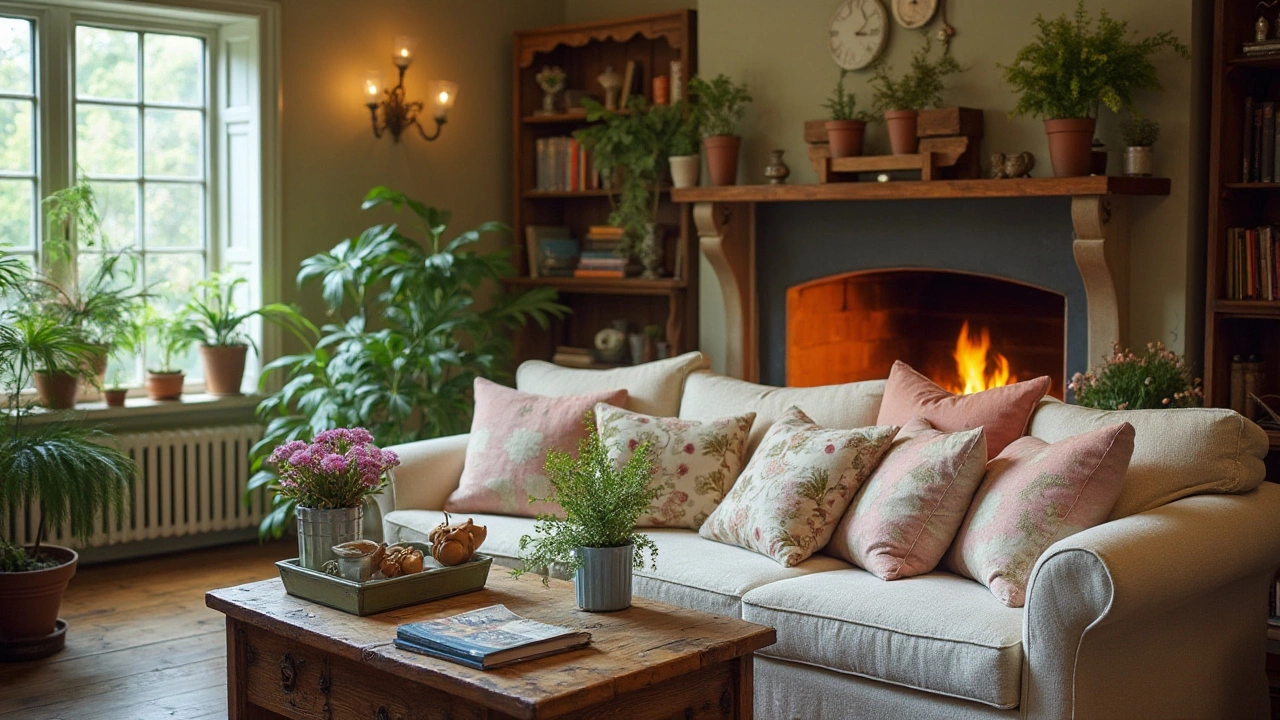
Creative Arrangement Ideas
Arranging cushions on your couch is much like painting on a canvas, where your choices in color, size, and texture can completely transform the overall vibe of your living room. A key creative approach is adopting the 'odd number rule' for your couch cushions arrangement. This time-tested interior design hack suggests using an odd number of cushions, often achieving greater aesthetic appeal than even numbers. For instance, choose three cushions for a compact two-seater couch or five for a larger sofa to ensure a more dynamic and inviting layout. Odd numbers bring a sense of randomness and ease while preventing a strictly symmetrical, overly formal appearance.
Another delightful technique is opting for a mix of textures and designs, fusing various patterns and materials. Consider combining a plush velvet cushion with a geometric-patterned cotton or a silky floral-printed cushion with a cozy woolen one. Layering different textures and bold patterns adds depth and dimension to your couch, crafting a rich, tactile experience that's both visually stunning and pleasant to touch. Not only does this juxtaposition create a modern and chic look, but it also makes the space feel personal and welcoming.
"The meticulous art of creative pillow arrangement can elevate the mundane to the extraordinary," states renowned interior designer Nate Berkus.
For a truly sophisticated look, consider coordinating your living room decor with your cushions, linking elements of the couch decor to other furnishings or artwork in the room. Continuity in design can be effortlessly achieved by picking up on color cues or patterns found in nearby rugs, curtains, or wall art. This harmony ties the room together, imparting a cohesive and polished architecture to your space.
For those who enjoy seasonal decorating, changing the arrangement and cover styles of your cushions is a low-effort, high-impact way to refresh your living room according to the season. In winter, you might favor cushions in warming hues such as deep reds or royal blues, accompanied by materials like faux fur or wool. In spring, refreshing your cushions with pastel colors like soft pinks or light greens, using linens or light cottons, can infuse new energy into the room. Such seasonal swaps keep your decor feeling alive and harmonious with the annual cycle.
Beyond personal choice, it's vital to consider the utility your couch serves. If it's primarily for lounging, incorporating larger European-sized cushions might be ideal for optimal comfort. Meanwhile, for a couch often used in social settings, smaller and more structured cushions allow for easier movement and seating flexibility. Moreover, a tiered arrangement, with larger cushions at the back and smaller ones upfront, can ensure optimal comfort without sacrificing any style---making every visitor feel as if each pillow was placed deliberately for them.

